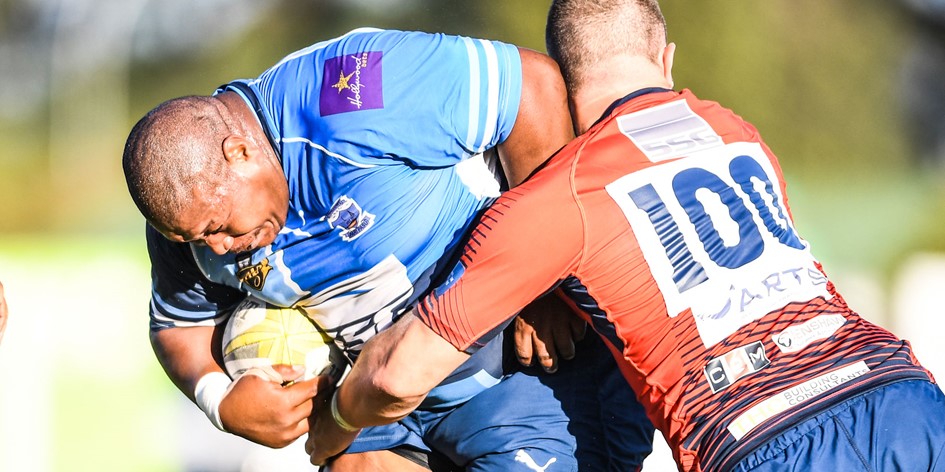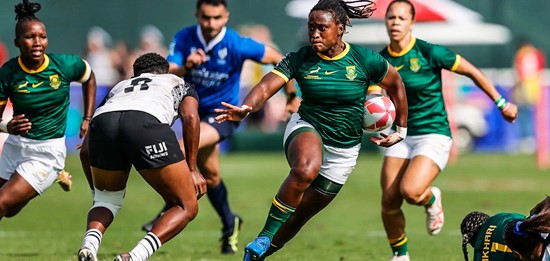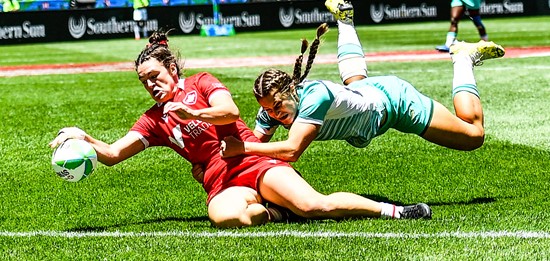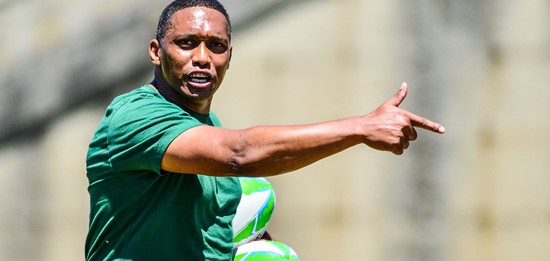The updated Laws relate to lowering of the maximum legal height at which a tackle may be made while also outlawing potentially dangerous ball-carrying actions and techniques.
The changes are the outcome of seven months of detailed review, discussion and debate of the World Rugby concussion data, the research evidence in this field and important brain, head, neck, and spine injury data collected by SA Rugby over the last 16 years via the BokSmart national rugby safety programme.

The key changes to apply to all school and club matches from the New Year are:
- Tackles in open play must be made at the base of the sternum (breastbone) or below.
- Double tackles and second tacklers (as per Law) are permitted in open play but must be made at the base of the sternum or below.
- The ball carrier in open play may carry the ball into contact in a forward bent body position, but must have head and shoulders above the hips, and must make the ‘safe zone’ between the sternum and mid-thigh, accessible to the tackler.
- The ball carrier in open play may not carry the ball headfirst into contact with the body fully bent and horizontal, or with head lower than the hips.
- The ball carrier may ‘pick-and-drive’ in a low body position (lower concussion risk).
- The ball carrier at the ‘pick-and-drive’ may not place a hand on the ground prior to contact to propel themselves forwards into contact (the technique known locally as the ‘cannon-arm’).
- A player may only bind (latch) onto the ‘pick-and-drive’ ball carrier once they have already made contact with the defender.
The amendments are the result of a World Rugby recommendation that unions participate in trials to lower the maximum legal tackle-height in community rugby. The Law changes do not apply to professional rugby.
“We believe that the changes will positively lower the head contact risk,” said Rian Oberholzer, CEO of SA Rugby. “With the parallel law changes to the ball carrier actions, there will also be a gradual improvement in the risk of serious brain, head, neck, and spine injuries to both tacklers and ball carriers.”
“Rugby is a dynamic game, and it is impossible to control all players’ actions on the field but with these new law changes and a strong drive towards coaching ‘safe and effective’ tackle and ball carry techniques from coaches, there will be less head contact and a systematic lowering of the concussion risk over time.”
Unions have been given freedom to adapt the laws within their own country. SA Rugby established a Tackle Height Player Safety Task Team with representatives from coaching, refereeing, medical, women’s rugby, strategic transformation and compliance, communications, high performance, scientific research, and schools, to explore the issue.
The outcome was that South Africa has taken the invitation beyond tackle height only, by examining the role of the ball-carrier in open play and the ’pick-and-drive’ area of the game.
Evidence shows that lowering the tackle-height to the base of the sternum and below is statistically safer for both ball carriers and tacklers. Managing the way that the ball carrier enters the tackle contest, with these new laws, will potentially also protect both the ball carrier and tackler from serious brain, head, neck, and spinal injury.
The new law variations provide an opportunity for tacklers to make safe and effective tackles as well as allowing the ball carrier to brace for contact and protect themselves.
“Our medical department has commissioned and collaborated with academic institutions from here and around the world for many years on injury surveillance data to better understand the dynamics of the game and to inform our BokSmart programme” said Oberholzer.
“We realise that these changes will take time to get used to for players, coaches, match officials, and spectators but they in no way change the fundamentals of the game – only in the way in which those fundamentals of carrying the ball into contact and tackling are applied.
“At the end of 11 formal meetings for the task team as well as many informal ones, we conducted a survey among our rugby stakeholders on the proposed changes and received overwhelming support – at the rate of ten to one, for and against – to introduce the law changes from next year.
“However, safe, and effective tackler and ball carrier techniques and players’ proficiency in executing these, must be prioritized by all coaches and players to make this work.”
A more detailed explanation of the trial Laws, why they were considered and how they will be applied is available on MyBokSmart. A summary document covering the essential elements of these changes, can be downloaded by clicking here.








































